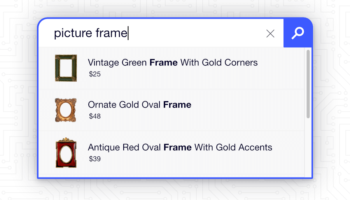Over on Search Engine Land today you’ll find their weekly “Search Illustrated” column, which this time around shows a 1-2-3 type illustration of podcast optimization. The title raised my eyebrows at first because, obviously, there’s only so much you can optimize about a piece of audio (and having a column about SEO contained entirely in graphics is a little ironic, but I digress…). But with a stretch of what the phrase “optimization” means, the tips end up being pretty solid.
Essentially, they say:
- Use a keyword-dense naming scheme for your podcast Fair enough. I would add, being a frequent podcast listener, that you should pay as much attention to naming your podcast consistently and optimizing the file names to be read in proper order by a computer.
Nothing’s more frustrating than downloading a bunch of podcasts (especially if they’re meant to listened to in order) and having them come up scrambled on your mp3 player. So just for the record, here’s the schema to use:
my-awesome-podcast-title-01.mp3
NOT my-awesome-podcast-title-1.mp3If not, all of your early episodes will be read after your later episodes, and who wants that? For similar reasons, I’d avoid doing anything too complicated — like having the day, month, year, etc., unless you test to make sure they’ll be listed in proper order by a computer.
- Brand your podcast at the beginning. – This is another given that’s overlooked by many amateur podcasters. Apart from a select few who might listen to your podcast in their web browser, your audience is portable people who will be listening to you far away from their computers and might not even have a device that can read your id3 tags (which we’ll get to in a second). Brand your podcast and let the listener know why they’re listening in the first 10 seconds or you risk losing them forever.
- Add to RSS Feeds – Another given. I assume they mean to make sure your podcast is part of an RSS feed, and if it isn’t, well… it’s not much of a podcast, is it? Do make sure to promote your feed as much as possible on the blog or website where you host your ‘cast.
- Place on a site and optimize the page – Probably the most important tip in the entire walkthrough. Google obviously can’t index audio, so your blog or website is the only opportunity to write content relevant to your podcast to attract organic searchers. As part of your overall plan you should try to get as much traffic from other blogs, forums, and directories, but never forget the Google.
- Make MP3 and iTunes versions – To be honest, I’m not entirely sure what they’re getting at here. MP3s work fine with iTunes, though you do want to make sure that you add descriptive id3 tags and your iTunes-specific XML data (a process made super-easy by Feedburner).
- Submit to Odeo and podcast search engines – Another given, and another task made easy by Feedburner. Properly configured, you’ll never need to worry about doing anything except hitting the “post” button, though you should make sure to get your podcast listed in as many directories as possible (which, surprisingly enough, can generate quite substantial traffic).
The directories to seek out?
- iTunes (obviously)
- Podcast Pickle
- Podcast Alley
- Yahoo (worth a shot, though they’re discontinuing their podcast directory)
- Odeo
- And many, many more
Now if your podcast doesn’t offer anything compelling to your audience, all of the optimization in the world won’t do much to help you gain a listenership. Remember that the audio crowd is smaller, and more impatient, than regular web visitors, but that a properly executed, compelling podcast can do a lot to sell your brand, services, or talent to that audience.
Want to hear a podcast in action? Then tune into SEO Audio every week for discussion about the latest SEO News and burning answers to your questions about web marketing.





